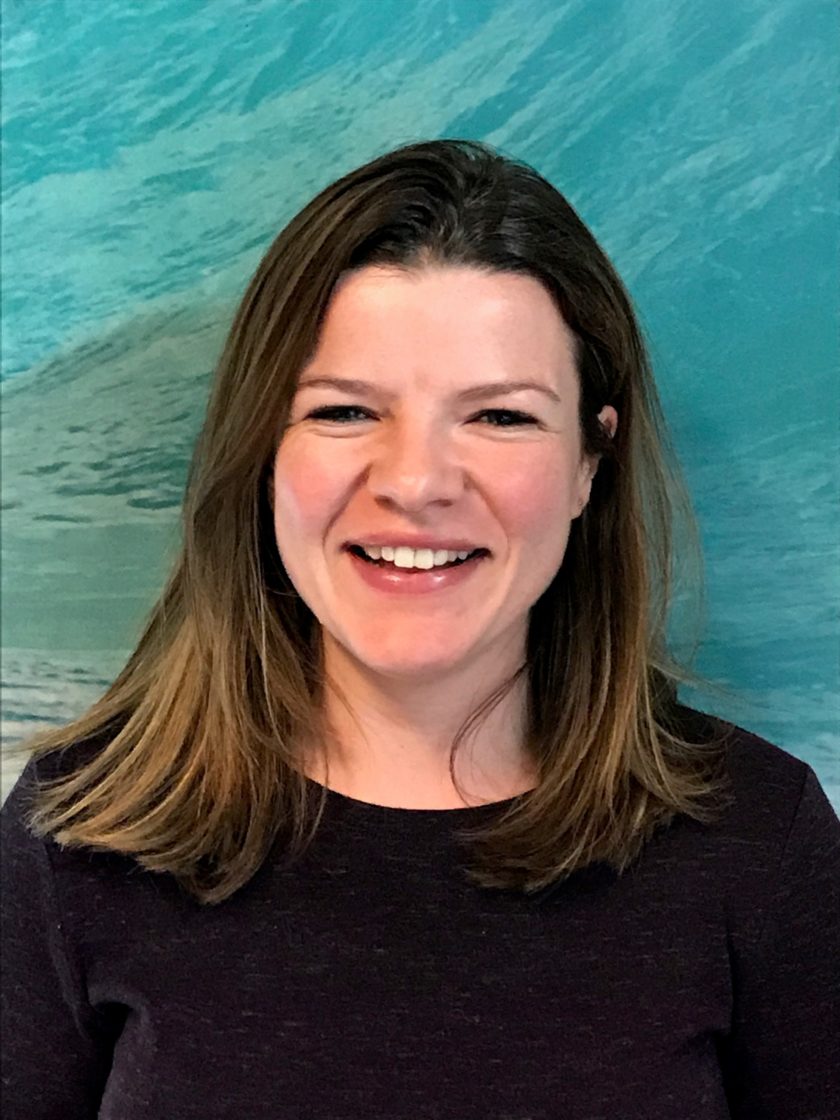 Sophie Morley became an ALS staff member this July but started coming to the ALS as a user in 2012. Sophie likes to surf and mountain bike, but read more to find out what she really considers to be her playground.
Sophie Morley became an ALS staff member this July but started coming to the ALS as a user in 2012. Sophie likes to surf and mountain bike, but read more to find out what she really considers to be her playground.
What do you work on at the ALS?
I started in July as a research scientist; however, I’ve come to the ALS since 2012, when I started using the XM-1 transmission x-ray microscope during my PhD (BL 6.1.2). Now, I work on coherent x-ray scattering, which is useful for looking at ordering in materials. A sample is never perfect and when you scatter coherent light from it, it produces an interference pattern that acts like a fingerprint of the disorder in your sample. With the upgraded ALS, we’ll have stronger signals and be closer to the nanometer scale both spatially and in time, so this technique will allow you to measure the dynamics of things that are difficult or impossible to see with a microscope. We’re currently incorporating fast detectors at the COSMIC beamline. Originally developed at CERN, these ‘Timepix’ detectors have been used in many varied applications, such as detecting cosmic radiation on the international space station. Their design allows them to run much faster, which will help us access brand new physics.
Before COVID, there was lots of hands-on work. I really enjoyed being in the lab and solving problems. A lot of work in automation has been done across all the light sources to make things easier for the user. We’re trying to shift so that the user gets results in real time. With more automation, the computer does the hard grind, and you can put your brain power into figuring out the physics or biology. Sometimes, people worry about automation, but it should give you more time to be innovative. Our brains are still more powerful than any supercomputer!
How did you get into synchrotron-based research?
In my second year of undergrad at the University of Leeds, I did a summer placement in the condensed matter physics lab. The physics you got to study was quite varied, and because you made your own samples, there was a creative part. It was like a big playground to me, so I did my master’s thesis and PhD there. In the UK, when you sign up for grad school, you sign up for a very specific project. Going in, I knew I was going to use synchrotrons and what kind of samples I was going to work with. My PhD was jointly funded with Diamond Light Source and I’ve also used NSLS-II for my research.
I kind of fell in love with Berkeley and California, and I really liked the environment here at the ALS. You have this really good mechanical workshop that can make any design that you can think of. We work pretty closely with the computing team because these new detectors produce data at a faster rate than we ever have previously, so that’s extremely challenging to handle and analyze. And then with the Molecular Foundry, it’s nice to have a local facility to make samples and do complementary experiments.
There’s something about Berkeley. Maybe it’s the proximity to the university that draws in people who are pushing the boundaries. It just feels a bit more synergistic.
 What are your thoughts on IDEA (inclusion, diversity, equity, and accountability)?
What are your thoughts on IDEA (inclusion, diversity, equity, and accountability)?
We’re all products of our environment, and it’s useful to think about your unconscious biases. Without somebody pointing them out to you, it’s kind of difficult, so it’s important to check in every so often. I’m passionate about outreach, in particular less privileged people might not have access to high-quality education, know that the national lab exists, or be exposed to different career paths in science. I want young women to know that female physicists exist, we’re here and this is what we’re doing.
What do you like to do in your free time?
I lived in Santa Cruz two years before I came here and got quite into surfing and mountain biking—pretty cliché! They both take a lot of focus and can be weirdly meditative at times, which I like.